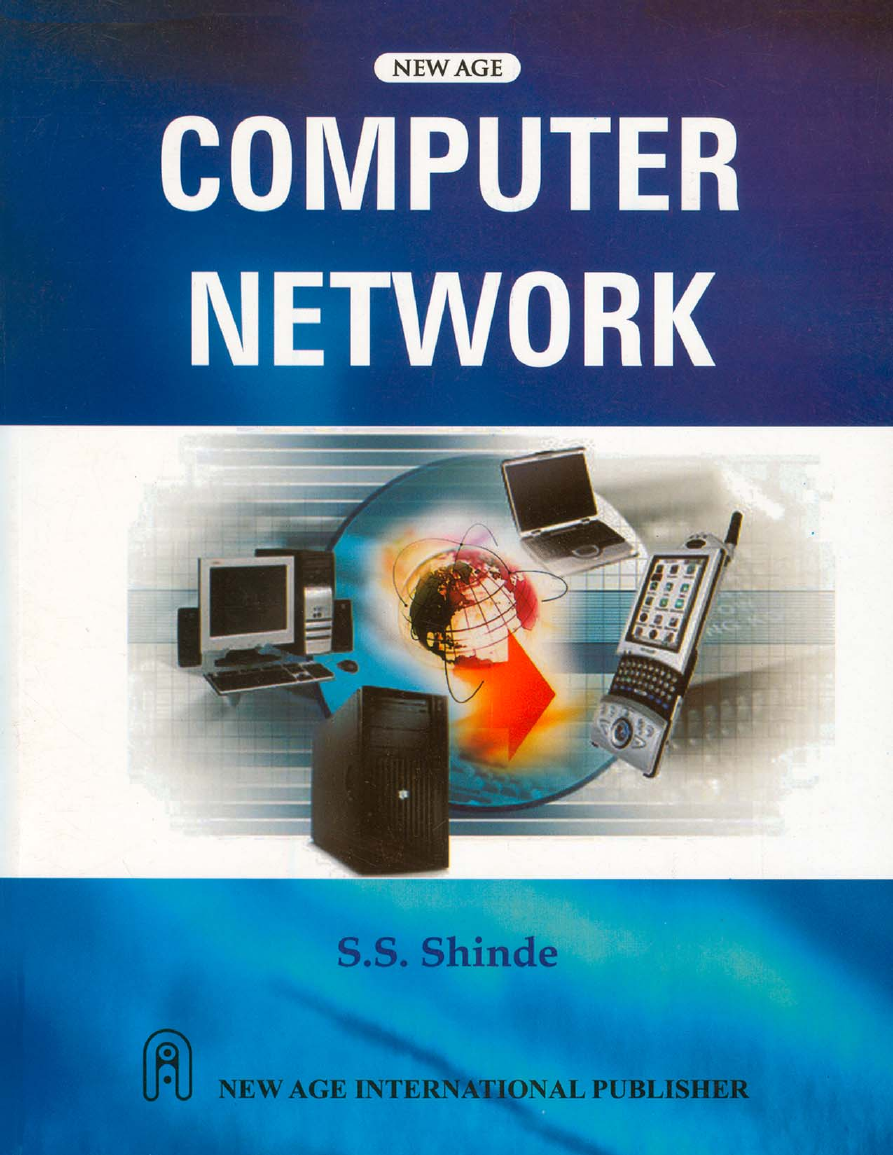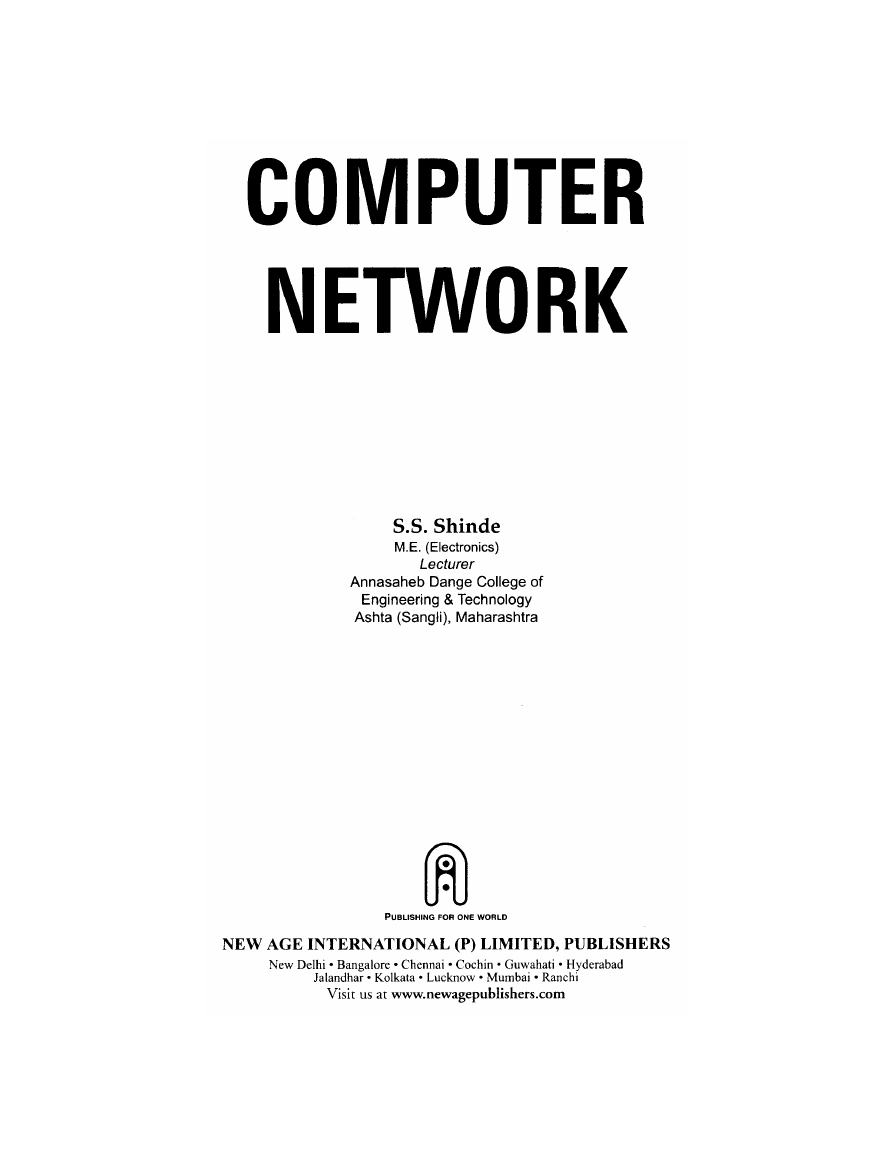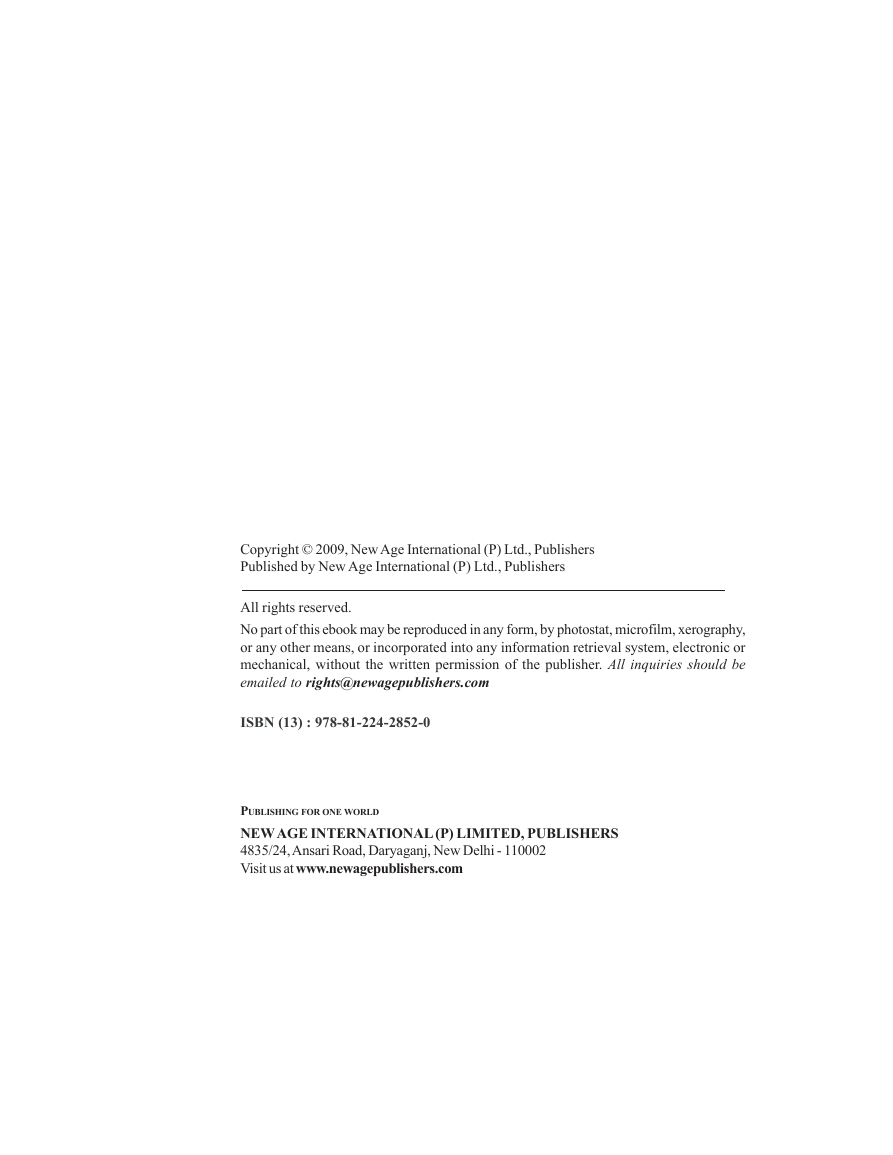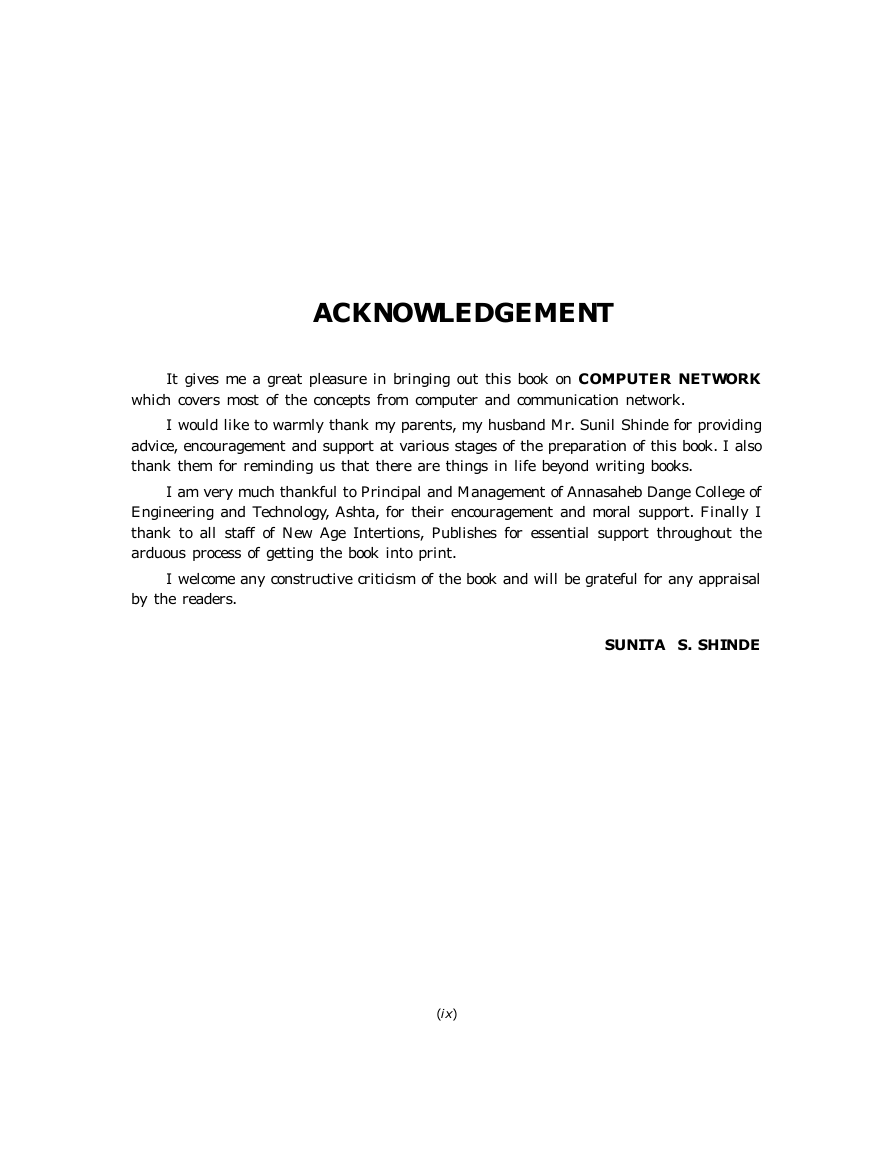Acknowledgement
Preface
Contents
Chapter 1. Basic Working Concept and System
1.1 Concept of Communication Network
1.2 Types of Communication
1.3 Channels and Circuits
1.4 Signals and Transmission
1.5 Channel Speed and Bit Rate
1.6 Online and Offline Systems
1.7 Interactive and Non Interactive Systems
Chapter 2. Communication System and Noise
2.1 Concept of Modulation
2.2 Amplitude Modulation
2.3 AM Bandwidth Requirement
2.4 Frequency Modulation
2.5 FM Bandwidth Requirement
2.6 Concept of Noise
2.7 Noise Figure and Noise Temperature
Chapter 3. Multiplexing
3.1 Concept of Multiplexing
3.2 Frequency Division Multiplexing
3.3 Time Division Multiplexing
3.4 Wavelength Division Multiplexing
Questionnaires
Chapter 4. Introduction to Computer Network
4.1 Need of Computer Networks
4.2 Advantages of Computer Networks
4.3 Uses of Computer Networks
4.4 Network Models
4.5 Categories of Networks and Internetworks
4.6 Line Configuration
4.7 Network Topologies
4.8 Study of Reference Models
4.8.1 Protocol Hierarchies
4.8.2 Design Issues for the Layers
4.8.3 The OSI Reference Model
4.8.4 The TCP/IP Reference Model
4.8.5 A Comparison of the OSI and TCP Reference Models
4.8.6 ATM
4.9 Network Examples
Questionnaries
Chapter 5. Network Concept and Components
5.1 Network Concepts
5.1.1 Wireless Networks
5.1.2 Layered Approach
5.1.3 Interfaces
5.1.4 Services
5.1.5 Protocols
5.1.6 Brief Study of X.25 Protocol
5.1.7 Intranet and Extranet
5.2 Network Components
5.2.1 Cabling and Connector Standards
5.2.2 Network Interface Card (NIC)
5.2.3 Bridges/Switches
5.2.4 Routers
5.2.5 Concentrators
5.2.6 Hubs
5.2.7 Repeaters
5.2.8 Gateways
5.2.9 ISDN
Questionnaries
Chapter 6. Physical Layer
6.1 Physical Layer Characteristics
6.2 The Theoretical Basis for Data Communication
6.2.1 Fourier Analysis
6.2.2 Bandwidth Limited Signals
6.2.3 The Maximum Date Rate of Channel
6.3 Transmission Media
6.3.1 Guided Media
6.3.2 Unguided Media
6.4 Transmission Impairment
6.5 Design Issues of Physical Layer
6.6 EIA-232-D Digital Interface
6.7 EIA-232-D Interface Specifications
6.8 Modems
6.8.1 Introduction
6.8.2 Types of Modems
6.8.3 Block Schematic of a Modem
Questionnaries
Chapter 7. Data Link Layer
7.1 Data Link Layer Design Issues
7.2 Services Provided to the Nework Layer
7.3 Framing Methods
7.4 Error Control-Detection and Correction
7.5 Flow Control
7.6 Elementary Data Link Protocols
7.7 Sliding Window Protocols
7.7.1 Stop-and-Wait Sliding Window Protocol
7.7.2 Sliding Window Protocol Protocol with Go-Back-N
7.7.3 Sliding Window Protocol with Selective Repeat
7.8 HDLC (High Level Data Link Control)
7.8.1 Introduction
7.8.2 Types of Stations
7.8.3 Modes of Operation
7.8.4 HDLC Frame Format
7.8.5 Additional Features
7.9 The Data Link Layer in the Internet
7.9.1 Slip-Serial Lines IP
7.9.2 PPP (Point-to-Point Protocol)
Questionnaries
Chapter 8. Medium Access Control Methods
8.1 Channel Allocation
8.1.1 Static Channel Allocation
8.1.2 Dynamic Channel Allocation
8.2 Types of Access Protocols
8.2.1 Aloha
8.2.2 CSMA (Carrier Sensing Multiple Access)
8.2.3 Wavelength Division Multiple Access
8.3 IEEE Standards
8.3.1 IEEE 802.3: Ethernet
8.3.2 IEEE 802.4: Token Bus
8.3.3 IEEE 802.5: Token Ring
8.4 High Speed Lans
8.4.1 FDDI (Fiber Distributed Data Interface)
8.4.2 Fast Ethernet
8.5 Satellite Networks
8.5.1 Polling
8.5.2 Aloha
8.5.3 FDM
8.5.4 TDM
8.5.5 CDMA
Questionaries
Chapter 9. Network Layer
9.1 Design Issues
9.2 Routing Algorithms
9.2.1 Shortest Path Routing
9.2.2 Flooding
9.2.3 Flow Based Routing
9.2.4 Distance Vector Routing
9.2.5 Link State Routing
9.2.6 Broadcast Routing
9.3 Congestion
9.3.1 Congestion Control Principles
9.3.2 Congestion Prevention Policies
9.3.3 Leaky Bucket Algorithms
9.3.4 Token Bucket Algorithm
9.3.5 Choke Packets
9.3.6 Load Shedding
9.3.7 Jitter Control
Questionnaries
Chapter 10. Internetworking
10.1 Internetworking Devices
10.2 Concatenated Virtual Circuits
10.3 Connectionless Internetworking
10.4 Tunneling
10.5 Internetwork Routing
10.6 Fragmentation
10.7 Fire Walls
10.8 TCP/IP Protocol Suit Overview
10.8.1 TCP/IP Vs OSI Model
10.8.2 Network Layer in the Internet
10.8.3 Internet Protocol (IP)
10.8.3 IP Addresses
10.8.5 Subnetting
10.8.6 Internet Control Protocol
Questionaries
Chapter 11. Transport Layer
11.1 Service Primitives
11.2 Elements of Transport Protocols
11.3 TCP
11.4 UDP
Questionnaries
Chapter 12. Upper Layers
12.1 Network Security
12.2 Cryptography
12.3 Secret Key Algorithms
12.4 Encryption with Public Keys and Private Keys
12.5 Session Layer Operations and Services
12.6 ASN.1 Abstract Syntax Notation 1
12.7 SNMP (Simple Network Management Protocol)
12.8 DNS (Domain Name System)
12.9 Application Layer Services
12.10 Study of Internet Tools
12.10.1 E-mail
12.10.2 USENET News
12.10.3 WWW (World Wide Web)
12.10.4 HTTP (Hyper Text Transfer Protocol)
12.10.5 HTML (Hyper Text Markup Language)
Appendix A
Appendix B
Appendix C
Appendix D
Appendix E
Appendix F
Appendix G
Glossary
Index
















 2023年江西萍乡中考道德与法治真题及答案.doc
2023年江西萍乡中考道德与法治真题及答案.doc 2012年重庆南川中考生物真题及答案.doc
2012年重庆南川中考生物真题及答案.doc 2013年江西师范大学地理学综合及文艺理论基础考研真题.doc
2013年江西师范大学地理学综合及文艺理论基础考研真题.doc 2020年四川甘孜小升初语文真题及答案I卷.doc
2020年四川甘孜小升初语文真题及答案I卷.doc 2020年注册岩土工程师专业基础考试真题及答案.doc
2020年注册岩土工程师专业基础考试真题及答案.doc 2023-2024学年福建省厦门市九年级上学期数学月考试题及答案.doc
2023-2024学年福建省厦门市九年级上学期数学月考试题及答案.doc 2021-2022学年辽宁省沈阳市大东区九年级上学期语文期末试题及答案.doc
2021-2022学年辽宁省沈阳市大东区九年级上学期语文期末试题及答案.doc 2022-2023学年北京东城区初三第一学期物理期末试卷及答案.doc
2022-2023学年北京东城区初三第一学期物理期末试卷及答案.doc 2018上半年江西教师资格初中地理学科知识与教学能力真题及答案.doc
2018上半年江西教师资格初中地理学科知识与教学能力真题及答案.doc 2012年河北国家公务员申论考试真题及答案-省级.doc
2012年河北国家公务员申论考试真题及答案-省级.doc 2020-2021学年江苏省扬州市江都区邵樊片九年级上学期数学第一次质量检测试题及答案.doc
2020-2021学年江苏省扬州市江都区邵樊片九年级上学期数学第一次质量检测试题及答案.doc 2022下半年黑龙江教师资格证中学综合素质真题及答案.doc
2022下半年黑龙江教师资格证中学综合素质真题及答案.doc